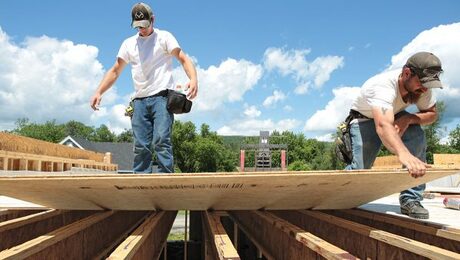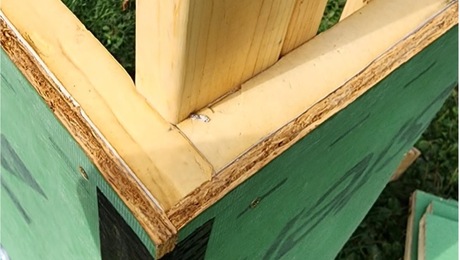Moisture barrier needed between hardwood floors and sub floor when installed over a climate controlled crawlspace?
I am getting ready to be able to bring the hardwoods into the house (new construction) for acclimation and am trying to determine best practices for this install over a sealed, insulated and climate controlled crawl space.
My crawl space will get sealed and insulated this week with plastic on the floor, closed cell foam on the CMU and fiberglass in the band. The air handler for the first floor is in the crawl and it has a small duct feeding conditioned air to the crawlspace. There is no dehumidifier with this design and my HVAC guy says they are not needed with this setup.
The flooring is site finished white oak and the installer wants to put down a synthetic moisture barrier which doesn’t seem like a bad idea but I am not sure if the design of my crawlspace relies on whatever moisture still enters being able to move through the subfloor and dry into the house.
My concern is that if I put this barrier down that I will block moisture and ultimately have a humid crawl, however I do see the benefit to keep the hardwood separated from the impact of the crawl’s environment.
Any insight on this is appreciated! Thx.
GBA Detail Library
A collection of one thousand construction details organized by climate and house part









Replies
BrunoF,
I really depends on what you mean by a "climate controlled crawlspace". If it maintains a similar temperature and humidity to the rest of the house then there is no point in separating it from the floor above. If it doesn't then a vapour barrier may help.
A comment on acclimatizing wood flooring: The aim is to hit a specific moisture content in the boards, which will minimize expansion and shrinkage over the year. You can find out what that needs to be from charts like this one: https://www.finehomebuilding.com/2022/05/03/how-to-acclimate-a-wood-floor-correctly
That may require active dehumidification to reach. Just leaving the boards on site where they acclimatize to the conditions of the house under construction can lead to problems.
I agree with Malcolm, and rarely use a vapor retarder under wood flooring as I don't think it does much if any good. But it's so ingrained into trade practices that I don't bother fighting if someone wants to use it.
Generally no barriers are used between conditioned spaces.
As for unconditioned crawl space, check out Photograph 4 in this article by Joe Lstiburek:
https://buildingscience.com/documents/insights/bsi-009-new-light-in-crawlspaces
It shows what can happen when a vapor barrier is put on the occupied side of the floor above an unconditioned crawl space. His contention is that any vapor barrier has to go on the crawl space side, to the extent moisture gets into the assembly it has to be able to dry to the interior, that's the only place it can dry.
So in summary, a vapor barrier under a floor would never be a good idea.
That was the logic I was concerned with but to a lesser extreme since I have a conditioned crawl. My installer always uses something as a slip sheet between the wood floor and the OSB, in this case it is Aquabar B.
https://www.robertsconsolidated.com/wp-content/uploads/2024/03/QEP_AquaBar-Underlayment_70-195_Spec-Sheet_ENG-1.pdf
That seems more like a vapor regarded than a barrier so I’m not sure if it would have any risk with it for my installation.
The spec sheet says 0.87 perms, which is a class 2 vapor retarder. Slips sheets on floors do nothing; squeaks happen when boards ride up and down on nails, not side-to-side on floors. But like I wrote above, it's so ingrained as a material that I don't bother fighting with installers about it.
So 0.87 perm is high enough not to cause issues regardless?